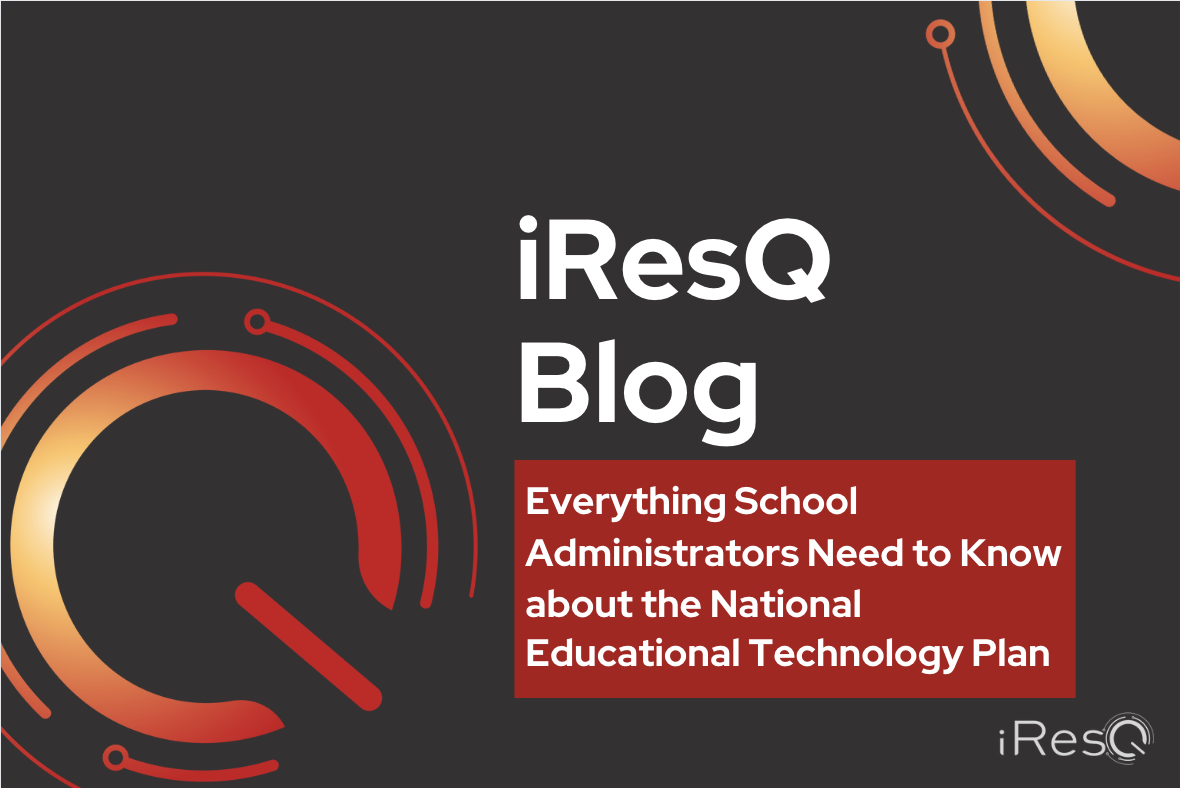When implemented properly, technology can be an effective and powerful tool in the classroom. Educators across the nation agree that incorporating technology in a meaningful way supports student learning, increases collaboration and engagement, while also preparing learners for their technology-infused future.
In response to the vast benefits found by incorporating technology in the classroom, the U.S. Department of Education rolled out the National Educational Technology Plan (NETP) in 2017. The NETP is an instructional action plan for education systems across the country to reference and utilize as a guide on how to successfully approach the use of technology in our 21st century classrooms. The NETP encourages students, teachers, and administrators to be future ready as technology and digital learning opportunities continue to evolve.
1. An Update to the National Educational Technology Plan is Coming Soon
As with any effective action plan, the NETP is actively growing and evolving based on what our educators need. With new technologies and apps being integrated into private and public school districts every day – especially post-pandemic – this update is crucial to keeping the NETP up to date and as useful as possible.
The U.S. Department of Education is preparing to rollout a 2024 update to the original version in the upcoming months. The U.S Department of Education values the opinions of education stakeholders including teachers, educational leaders, and policymakers at all levels. This collaborative effort invites a number of these digital learning stakeholders to contribute and provide input through short surveys, averaging around 10 questions each, on the Office of Educational Technology’s (OET) website.
2. Accessibility is Paramount
The NETP provides the opportunity to reimagine the role of technology in education and transform it to a vital and impactful resource. However, without careful integration of technology, rather than enhance a learner’s experience, it can instead present and increase many barriers for learners with disabilities or a lack of access to resources.
The NETP sets a national vision and plan to provide greater equity to enable transformational learning experiences and digital accessibility to ALL learners, regardless of race, class, ability, or connectivity access. The NETP outlines personalized learning experiences and opportunities for both students with disabilities and a lack of access to broadband and/or Wi-Fi to offer ideas and solutions to teachers, school districts, and more.
3. Teacher Support is Crucial
According to the Office of Educational Technology, the NETP “articulates a vision of equity, active use, and collaborative leadership to make everywhere, all-the-time learning possible.” With technology, teachers can expand their learning community to include more than just the learners in their classroom. By collaborating with experts in museums, libraries, after-school programs, members of local community organizations, and experts in various disciplines around the world, teachers can engage their students in a new and exciting way which will in turn, enhance their students’ learning experiences.
In order to reap the benefits that technology provides in the classroom, teachers need support in learning how to utilize the technology meaningfully. More than half of teachers indicate that they would like to incorporate more technology in their classrooms but have not been adequately trained in how to use the technology effectively. To support teachers in the incorporation of technology in the classroom, school districts need to supply ample professional development opportunities – such as the the Future of Education Technology Conference (or FETC for short) at which iResQ will have a booth – relating to a variety of multimedia, new technologies, and mentoring programs that allow teachers to learn more about digital learning best practices side by side.
4. Ensure the Proper Infrastructure is in Place within your School
Any educator can tell you that to reach a desire goal or objective, one must have an effective and clear plan of action. In the case of ed tech, building a robust infrastructure is vital in creating a productive student learning environment. The Office of Educational Technology’s Infrastructure page outlines the following components that they deem essential to creating an infrastructure that is both clear and flexible.
– Ubiquitous connectivity
– Powerful learning devices
– High-quality learning content
– Responsible Use Policies (RUPs)
If you or your school district needs more guidance, visit the U.S. Department of Education’s Building Technology Infrastructure for Learning for more information.
5. Lean on Strategic Partnerships to Make Your Technology Initiatives Successful
Whether overseeing a middle school, high school, higher education institution or any other education program, finding high-quality partners to come alongside your administrative team to prioritize the success of online learning and student achievement is paramount. If you’re looking for a team who can help you manage your technology resources and provide necessary repairs on your vital devices, reach out to iResQ today.
*All information regarding the National Educational Technology Plan in this article was researched from and can be found on the Office of Educational Technology’s webpage here.

